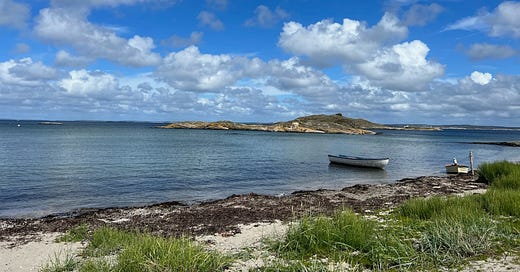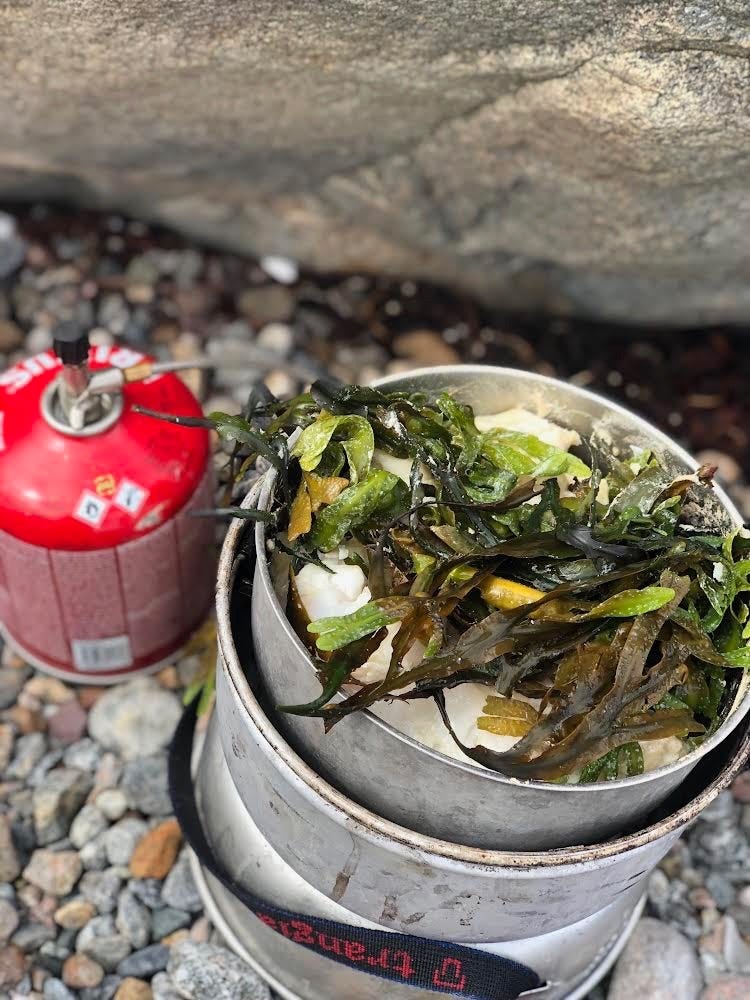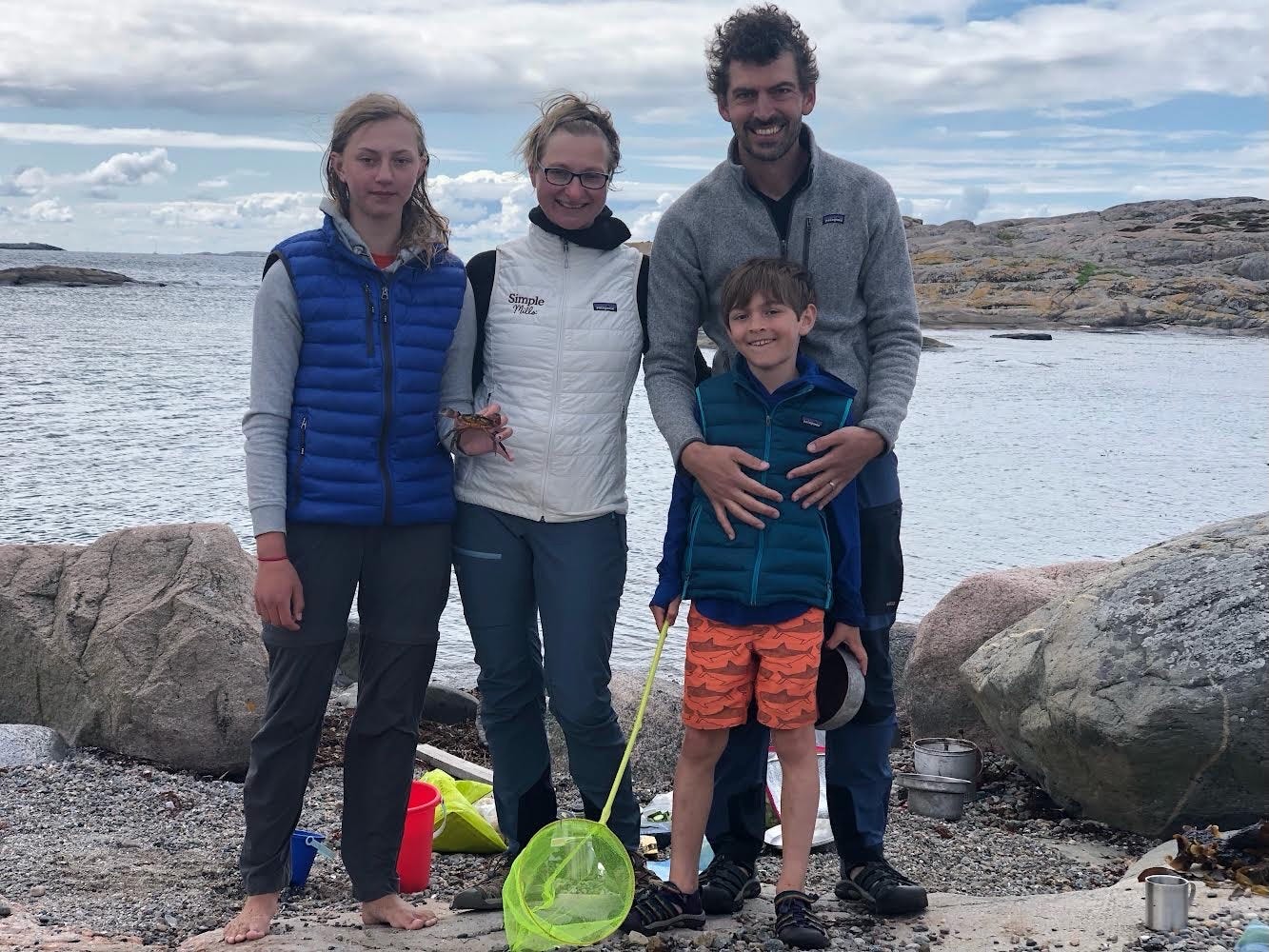Last month we spent a week in Bohuslän, an area on the western coast of Sweden just north of Gothenburg and extending to the Norwegian border. This part of Sweden is so captivating with its rocky shoreline and archipelago – more than 8,000 islands and skerries along this coastal province. We stayed in Grebbestad and found plenty to do, all within a 15-45 minute drive of our place. From kayaking to hiking, we relished the opportunity to discover and explore the area’s gems.
[We went snorkeling here, off the coast of Kosteröarna in the Kosterhavet National Park]
While boating and kayaking is a must while here, I found that it’s equally amazing to get beneath the surface to explore the life below. This part of Sweden is known for some of the best seafood in the country, boasting oysters and crabs, among other delights. The water is clean, cold and salty, so also ideal for seaweed growing conditions. With that, we discovered Catxalot, run by Linnéa Sjögren, who is passionate about sustainable seaweed harvesting and wants to instill an appreciation for edible seaweed from these clean and cold Nordic waters.
[Setting up for our seaweed excursion in the Tjurpannan Nature Reserve]
We met with Linnéa just outside of Grebbestad at the Tjurpannan Nature Reserve. After walking to the rocky coastline, we geared up in wetsuits to spend time exploring the seawater, learning how to differentiate among the species and responsibly harvest them. After pointing out the sea spaghetti, sea lettuce, sugar kelp, and several other types, we used a knife to harvest some (well above the root and leaving plenty of others around it) and collect them in a belted bag. While L harvested and collected, M and I explored more life in the water, finding small and large fish, sea stars and seaweed forests. After about 40 minutes in the brisk waters, we returned to shore and Linnéa cooked us a lunch of seaweed, potatoes, and fish, using some ingredients that she brought pre-prepped with seaweed, like a seaweed butter and seaweed crackers. All in all, a delicious experience!
[Fresh seaweed and fish in the stormkök]
[Post-swim family photo]
We harvested enough seaweed to bring home, so we carefully stored and refrigerated it for the return. Once home, I dried some in the oven and powdered it for future use, and then I used the rest for a delicious Melissa Clark recipe that I highly recommend for anyone to try. The salty and mineralized flavor from the seaweed takes this roasted chicken to a new level.
[Foraged kelp: from fresh to dry and ready to store]
The excursion in the Bohuslän was educational and inspiring on many levels. While I’ve been an avid swimmer for years, I have only gone ocean swimming in tropical waters and in the San Francisco Bay (during COVID times – desperate, but fun! 😊). Getting to explore these archipelago waters in Sweden that extend into the North Sea was a new sea experience and taught me how incredibly abundant and fun it could be to seaweed forage. In fact, this superfood is increasingly being recognized for its flavor, nutrition and sustainability (when harvested responsibly), attributes that many cultures around the world have known for years.
Moving from the ancient practices of wild harvesting to cultivated production is an area that more entrepreneurs are starting to explore in the Nordics and the USA. Nordic Sea Farm, based in Sweden, and Atlantic Sea Farms, based in Maine, are just two examples of relatively new companies on a mission to grow the industry responsibly. Each touts the benefits of seaweed for human health (through nutrient density), addressing climate change (by removing excess carbon and avoiding land use) and boosting fisher/farmer livelihoods (by providing additional income streams). Much to be learned and discovered in this burgeoning area. I feel fortunate to have discovered the art of wild foraging, but am now more curious about ways to do more sustainable cultivation.
Moreover, I have to put in a plug for Bohuslän. While this region seems to be well-known among Swedes, Norwegians and Germans, I didn’t hear any American voices while on this trip. So I’m making the recommendation to my fellow Americans and Canadians: plan a trip next summer – it is worth the exploration!









Wow!
Great division of labor. The scenery is beautiful, and good to know the water quality is excellent.